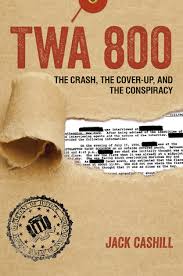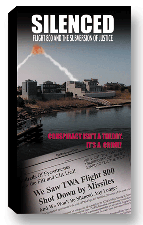Who Is The Austin Bomber?
Here Are Six Possibilities.
![]()

Order Jack Cashill's latest book, TWA 800: The Crash, the Cover-Up, and the Conspiracy
![]()

About Silenced: Flight 800
and the Subversion
of Justice (DVD) -
-Buy the Silenced DVD-
![]()
© Jack Cashill
March 14, 2018 - WND.com
Three bombs, two of them lethal, all of them sophisticated, have shocked the citizens of Austin, Texas, over the last ten days.
There is a good deal of speculation as to who the bomber or bombers might be. A quick review of the kind of bombers America has produced in the last century might shed some light on the likely suspect or suspects in this one.
The racist
When it was revealed that the first two victims were African American, not unexpectedly the media started talking about “hate” as a motive.
The fact that the third victim was a 75-year-old Hispanic woman upset this calculation. The media still argue that the victims are all “people of color,” but that is a classification the media are more likely to conjure than are racists.
In 1963, members of the Ku Klux Klan notoriously planted dynamite in a Birmingham Church killing four young black girls. So racists do have some history of using bombs.
If the motive were hate, however, one would think the bomber would have chosen targets more narrowly and strategically.
The ideologue
The best known bombers in recent American history are ideologues who have used bombs to make statements. In the 1970’s, the Weather Underground picked obvious targets—like the U.S. Capitol—and followed up with manifestos.
In 1995, Timothy McVeigh and accomplices, some still unknown, targeted the Murrah Building in Oklahoma City as an act of revenge against the Federal Government for its role in Waco horror show two years prior.
In 1996, Eric Rudolph bombed an abortion clinic in Alabama and the Centennial Park in Atlanta during the Olympics. His motive was less focused than McVeigh’s but there was at least some logic to it.
The same was true of the Unabomber, Theodore Kaczynski. Like the Austin bomber, his bombs were delivered to a given home, but unlike in Austin, there was an ideological thread tying his targets together. To him, they all represented an affront to his distinctive nature-centered anarchism.
The terrorist
Islamic terrorists have been using bombs to incite terror throughout the world for years.
In 1993 Islamists planted a truck bomb beneath the North Tower of the World Trade Center, killing six and injuring more than a thousand.
Almost surely a coincidence, the media noted the 25th anniversary of the WTC bombing four days before the first Austin bombing.
On a smaller scale, the Tsarnaev brothers, also Muslim, terrified Boston five years ago when they planted multiple home-made bombs along the Boston Marathon route, killing three and injuring hundreds more.
Unless they were trying to aggravate racial tension, however, there would seem little reason for Islamic terrorists to bomb individual Americans in Austin, Texas.
The racial hoaxer
Laird Wilcox, arguably the nation’s foremost hate crime hoax detector, writes, “I would say now 80 percent of the events that happen on campus are hoaxes or pranks.”
Wilcox continues, “It’s a place where consciousness of discrimination, sexism and homophobia is at a peak, and when there’s nothing happening, and they need something to happen, they can make it happen.”
The site fakehatecrime.org builds on the work of Wilcox. It now lists 333 documented cases of hate crime hoaxes. It is, of course, a major step up from writing a racial slur on a dormitory wall to making and delivering a lethal bomb.
The agent provocateur
There are elements in Austin, a progressive city and the home of the University of Texas, that are willing and able to encourage revolutionary violence.
One goes by the name “Red Guards,” the hardest core of the groups lumped under the banner of Antifa.
Proudly Maoist, the Red Guards-Austin boasts, “We insist that the reality of our class is violent. The material conditions of our torment and exploitation have provided our class with creative potential for revolutionary violence. Class struggle is violent.”
In their literature, the Red Guards give no indication they would run a false flag operation against “people of color” to kick-start the revolution, but they do talk a mighty tough game.
The mad bomber
For 16 years in the 1940s and 1950s, George “mad bomber” Metesky terrorized New York by planting bombs in public places.
Metesky was credited with 33 bombs that resulted in 15 injuries. He was motivated by a workplace dispute years earlier, but there was no ideological link among his targets.
These included movie theaters, libraries, train stations, and bus terminals. This lack of coherence made him all the more difficult to track.
Although a sophisticated maker of bombs, Metesky was found legally insane and committed to a state mental hospital. Smart people can be crazy.
In sum
Working from a data sample of just three, authorities are hard pressed to suggest a motive for the bombings. Of all the categories considered, only “madness” has no argument against it.
The media would do well to avoid promoting a motive based on their own worldview. As happens all too often—the D.C. snipers come to mind—the media’s agenda leads them almost comically astray.

